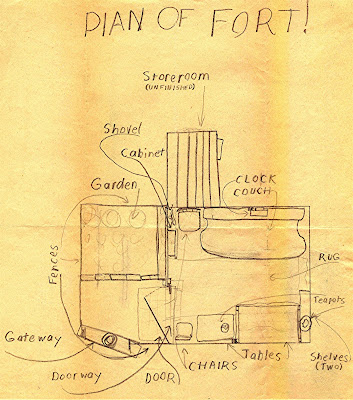You can either buy new materials or find them around your neighborhood.
If you don’t have any money, finding the wood for your clubhouse can be a challenge, but it can be done. Keep an eye out as you walk or bike-ride around your neighborhood. Ask around! Is there an old shed nearby that you can tear down in exchange for the wood? How about that fence that fell down a month ago? Does so-and-so want that window sitting in his garage? With patience and persistence, you’ll likely get the lumber, windows, paint, and whatever else you’ll need for your clubhouse with the help of your friends and neighbors.
Getting materials is also where co-operation comes into play. If your friends (and their friends) can help donate the stuff you need to build the clubhouse, then everyone will benefit! This is the point where you might want to write up some sort of club agreement where everyone who contributes wood or other materials can be part of the club on some level. Trust will play a big part here.
It is also likely that you will have to buy some of the lumber and the nails from a lumberyard, so you will need money and a car. If you still need the Basic Tools listed in Chapter 2, you’ll need to shop for them as well. This, along with the permission thing, brings up co-operation with grownups. If you offer to give them something they need, beyond what they already expect of you, there is a good chance you will get the materials and tools you will need. In the process you’ll become very good at real-world negotiating, a great lifetime skill!
*******************************
You can find cheap
recycled stuff at salvage yards, resale shops, St Vincint de Paul’s or other
thrift shops. Hardware store paint departments often have returned custom-color
paints for sale at $2. to $5. a can, and it’s good paint if you like the color!
(Avoid oil-based paints, though)
Another good
source: Habitat for Humanity operates The Restore, a chain of used building-material
outlets. They have everything including lumber, odd furniture, nails and hardware. It’s
an adventure!








